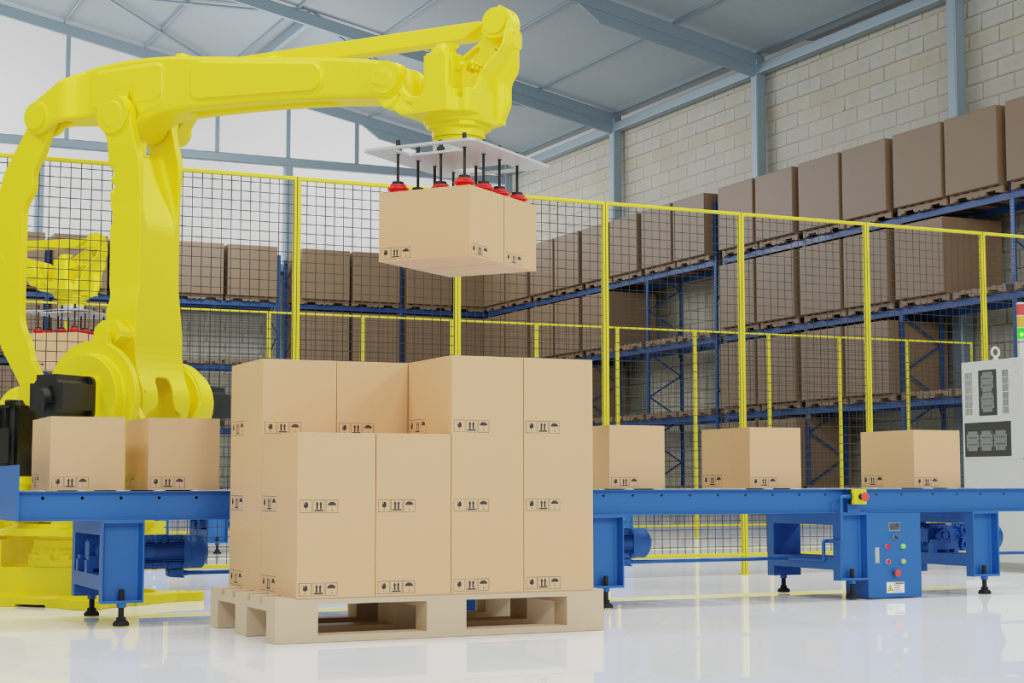Amazon has unveiled a new fleet of robots designed to reduce manual labor in its warehouses and delivery stations. The move signals a deeper push toward task-specific automation, with an emphasis on improving worker safety and process efficiency.
Robots Designed to Complement
Amazon introduced seven new robotic systems on May 7, each focused on automating narrow, repetitive tasks within its logistics network. The new machines, currently rolling out across European facilities, are intended to improve throughput, reduce ergonomic strain, and streamline workflows without fully replacing human workers.
Among the systems is “Tipper,” which unloads packages from carts onto conveyor belts, eliminating a repetitive task typically done by hand. “Echelon” manages the movement of packages on conveyors, while a six-sided scanner automates barcode capture. “ZancaSort” delivers packages to employees at a fixed ergonomic height, and “Agility” helps route parcels to their correct destinations with minimal human input.
The most advanced system, “Vulcan,” uses pressure-sensitive tooling to pick and stow items in hard-to-reach areas of inventory pods. Amazon says the robot reduces the need for employees to use ladders and work in awkward positions. Vulcan is expected to deploy in U.S. and European sites over the next few years.
Nicola Fyfe, VP of Amazon Logistics in Europe, said in an official interview that the robots are intended to create “high-skilled work that is ergonomically sound.” The company has framed the move as a step toward safer, more efficient warehouses, not as a replacement for human labor.
Automation Strategy for Incremental Gains
Amazon’s automation strategy remains measured. Although the company says over 750,000 robots are already in operation—supporting more than 75% of customer orders—many of its new systems won’t reach the U.S. market until 2027 or later. The rollout is designed to address specific operational pain points, not overhaul entire workflows.
The company continues to face criticism over worker safety. A 2024 U.S. Senate report accused Amazon of maintaining a “uniquely dangerous” warehouse environment. Amazon has pushed back, pointing to productivity and safety gains from its existing automation investments. On a recent earnings call, CEO Andy Jassy said robotics had already delivered “significant value” in terms of cost savings and improved safety.
The robots announced last week reflect a pragmatic shift: automation that supports human workers rather than replaces them. Each system tackles a specific manual process—unloading, sorting, scanning, or reaching—rather than attempting end-to-end automation. That approach reduces complexity and allows Amazon to scale incrementally across its global logistics footprint.
A Measured Blueprint for Warehouse Modernization
Amazon’s latest robotics push is notable less for its technological novelty and more for its operational pragmatism. By focusing on discrete pain points, the company is pursuing automation as a process refinement tool, not a sweeping labor replacement strategy.
Systems like Vulcan and Echelon show that targeted robotics, deployed where labor constraints and inefficiencies converge, can yield meaningful productivity and safety gains without introducing unnecessary complexity. As these systems scale, the operational test will lie in integration—how well these tools align with real-world workflows, labor dynamics, and performance thresholds.



